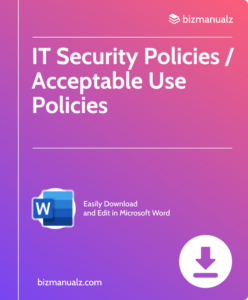CIO AI powered Cybersecurity

As technology continues to advance, the threat of cyber attacks and data breaches becomes increasingly concerning for businesses and individuals alike. To address this issue, many organizations are turning to AI-powered cybersecurity solutions, utilizing cutting-edge technology to protect their valuable data. In this article, we will explore the importance of implementing AI in cybersecurity and how it can benefit you in safeguarding your sensitive information. CIO AI powered Cybersecurity.
What is CIO AI-Powered Cybersecurity?
CIO AI-powered cybersecurity is a cutting-edge technology that utilizes artificial intelligence to strengthen security measures. By utilizing AI algorithms, it can detect and respond to cyber threats in real-time, providing a strong defense against sophisticated attacks.
In today’s fast-paced digital landscape, this proactive approach is crucial as cyber threats constantly evolve. To effectively implement CIO AI-powered cybersecurity, companies must invest in robust AI systems, regularly update them, and provide proper training to their IT teams.
What is the Role of AI in Cybersecurity?
AI has a significant impact on cybersecurity, as it plays a crucial role in identifying patterns in data to detect and prevent cyber threats. It also automates routine tasks and enables quick response to security incidents.
By analyzing large volumes of data, AI can distinguish normal behavior from anomalies, thus enhancing threat detection. Furthermore, AI can assist in real-time threat assessment, allowing for rapid adaptation to evolving cyber threats.
In fact, AI-powered cybersecurity systems have the capability to analyze and correlate vast amounts of data at speeds much faster than human analysts.
How Does AI Improve Cybersecurity?
- Real-time threat detection: AI swiftly identifies and responds to potential threats before they escalate.
- Behavior analysis: AI monitors and analyzes user behavior to detect anomalies and flag suspicious activities, improving cybersecurity.
- Automated incident response: AI automates the process of responding to security incidents, reducing response time for improved cybersecurity.
- Anomaly detection: AI algorithms can identify unusual patterns or activities that may indicate a security breach, enhancing cybersecurity measures.
What Are the Limitations of AI in Cybersecurity?
The limitations of AI in cybersecurity include challenges in interpreting diverse data and difficulty in recognizing uncommon attack patterns. Furthermore, AI may face difficulties in differentiating false positives from real threats, which can affect the reliability of the overall system.
It is important to also acknowledge the history of AI in cybersecurity, including the first major cyber attack powered by AI in 2007, when the Storm Worm infected millions of computers worldwide.
What Are the Benefits of CIO AI-Powered Cybersecurity?
As cyber threats continue to evolve and become more sophisticated, Chief Information Officers (CIOs) are turning to artificial intelligence (AI) to bolster their cybersecurity measures. But what exactly are the benefits of implementing AI-powered cybersecurity?
In this section, we’ll discuss four main advantages: real-time threat detection, automated response to threats, enhanced data protection, and cost savings. These benefits demonstrate how AI technology can revolutionize traditional cybersecurity methods and keep organizations one step ahead of cybercriminals.
1. Real-time Threat Detection
- Incorporate advanced AI-powered cybersecurity systems with real-time threat detection capabilities.
- Integrate threat intelligence tools to enhance the ability to detect and respond to evolving threats.
- Utilize machine learning algorithms to analyze patterns, anomalies, and behaviors in network traffic for early threat identification.
- Deploy automated monitoring and alert systems to promptly identify and mitigate potential security risks.
To effectively detect threats in real-time, CIOs should consider utilizing AI-driven solutions that offer continuous monitoring, adaptive learning, and rapid response mechanisms.
2. Automated Response to Threats
- Evaluate the Threat: AI analyzes incoming threats to determine severity and impact.
- Automated Response: Once a threat is identified, AI immediately initiates automated response protocols.
- Isolate and Contain: AI isolates affected systems and contains the threat’s spread to minimize damage.
- Alert Security Team: Simultaneously, AI alerts the security team for further investigation and intervention.
3. Enhanced Data Protection
- Implement data encryption to enhance data protection and safeguard sensitive information.
- Utilize AI for continuous monitoring of network traffic, swiftly identifying anomalies and ensuring enhanced data protection.
- Deploy AI-powered user behavior analytics to detect unauthorized access or data breaches and enhance data protection.
- Employ AI algorithms for predictive analysis to pre-empt potential data security threats and enhance data protection.
4. Cost Savings
- Invest in AI-powered cybersecurity solutions to reduce costs and streamline security processes.
- Automate routine security tasks to save time and resources.
- Implement predictive analysis to proactively address potential security threats, minimizing financial impact.
- Leverage AI for efficient risk assessment and management, optimizing resource allocation and ultimately leading to cost savings.
Consider collaborating with AI cybersecurity experts to tailor cost-effective solutions that align with your organization’s specific needs and budget.
What Are the Risks of CIO AI-Powered Cybersecurity?
While AI-powered cybersecurity systems offer promising advancements in protecting sensitive data and networks, there are still potential risks that must be considered. In this section, we will delve into the potential risks associated with CIO AI-powered cybersecurity.
From malfunctioning AI to a lack of human oversight, these risks can leave organizations vulnerable to cyber attacks. Additionally, we will discuss the potential for AI itself to become a target for malicious attacks, highlighting the need for thorough security measures.
1. Malfunctioning AI
- Regular Monitoring: Implement continuous monitoring to promptly detect any malfunctioning AI.
- Quality Assurance: Conduct rigorous testing to ensure the AI functions accurately and reliably.
- Human Oversight: Integrate human oversight to supervise AI operations and intervene when malfunctions occur.
- Update Protocols: Establish protocols for updating and maintaining AI systems to prevent malfunctions.
2. Lack of Human Oversight
In the world of AI-powered cybersecurity, the lack of human oversight, as highlighted by point 2, can result in overreliance on AI and potentially lead to missed threats.
It is essential to have human intervention to interpret complex data and adapt to ever-evolving cyber threats. A helpful tip is to maintain a balance between AI automation and human supervision for the most effective cybersecurity defense.
3. Vulnerability to AI Attacks
The risk of AI attacks is a major concern in CIO-led AI-powered cybersecurity. As AI technology advances, it also becomes vulnerable to exploitation by cybercriminals. These attackers may take advantage of AI algorithms to circumvent security measures, create convincing phishing scams, or execute complex cyber-attacks. Therefore, it is crucial for CIOs to focus on developing strong defense mechanisms for AI while implementing their AI-powered cybersecurity strategies.
How Can CIOs Implement AI-Powered Cybersecurity?
As cyber threats continue to evolve, CIOs are turning to artificial intelligence to bolster their cybersecurity efforts. But how exactly can they implement AI-powered solutions into their existing systems?
In this section, we will break down the crucial steps that CIOs must take to successfully integrate AI into their cybersecurity strategy. From assessing their specific cybersecurity needs to choosing the right AI tools, training and integrating them into their systems, and ensuring regular updates and maintenance, we will discuss the key elements of implementing AI-powered cybersecurity.
1. Assessing Cybersecurity Needs
- Understand the current cybersecurity infrastructure and its strengths and weaknesses.
- Identify existing and potential cyber threats specific to the organization.
- Assess the organization’s level of data sensitivity and the potential impact of a cybersecurity breach.
- Evaluate compliance requirements and industry-specific regulations for cybersecurity.
2. Choosing the Right AI Tools
- Evaluate AI tools based on specific cybersecurity needs.
- Consider scalability, compatibility, and integration capabilities.
- Assess the track record of AI tools in threat detection and response.
- Review user interface and ease of use for seamless implementation.
3. Training and Integration
- Educate staff on the importance of AI technology and its role in cybersecurity.
- Provide training on new tools and software to effectively integrate them into daily operations.
- Encourage collaboration between the IT and cybersecurity teams to ensure seamless integration.
- Conduct drills and simulations to practice responding to potential threats and ensure proper training and integration.
4. Regular Updates and Maintenance
- Regular Updates: It is crucial to implement scheduled updates for AI-powered cybersecurity tools to ensure that they are equipped with the latest threat intelligence and security patches.
- Maintenance: Consistent monitoring and maintenance of AI systems is necessary to address any performance issues, update algorithms, and optimize for evolving cybersecurity needs.
AI powered Cybersecurity
CIO AI-powered cybersecurity is a state-of-the-art technology that fortifies security protocols with artificial intelligence. It can identify and react to cyberthreats instantly by leveraging AI algorithms, offering a robust defense against complex attacks.
This proactive approach is essential in the rapidly changing digital landscape of today because cyber threats are ever-evolving. Companies that want to successfully deploy CIO AI-powered cybersecurity must make significant investments in reliable AI systems, update them frequently, and give their IT staff the necessary training.
Frequently Asked Questions

1. What is CIO AI-Powered Cybersecurity?
CIO AI-Powered Cybersecurity refers to the use of artificial intelligence (AI) technology in securing computer systems, networks, and digital assets against cyber threats. It involves the implementation of advanced algorithms and machine learning techniques to detect and respond to potential cyber attacks in real-time.
2. How does CIO AI-Powered Cybersecurity work?
CIO AI-Powered Cybersecurity works by continuously monitoring and analyzing data from various sources such as network traffic, system logs, and user behavior. The AI algorithms then use this data to identify patterns and anomalies that could indicate a potential threat. If a threat is detected, the AI system can automatically take action to mitigate the risk and prevent a cyber attack.
3. What are the benefits of using CIO AI-Powered Cybersecurity?
There are several benefits of utilizing CIO AI-Powered Cybersecurity, including:
- Improved threat detection and response time
- Reduced human error in cybersecurity processes
- Continuous monitoring and protection of digital assets
- Increased efficiency and cost-effectiveness in cybersecurity operations
- Ability to adapt and learn from new cyber threats
- Enhanced overall cybersecurity posture
4. Is CIO AI-Powered Cybersecurity suitable for all types of businesses?
Yes, CIO AI-Powered Cybersecurity can be implemented in any type of organization, regardless of size or industry. This technology is designed to be scalable and customizable to meet the specific needs and requirements of different businesses. It can benefit organizations of all sizes, from small startups to large enterprises.
5. How can CIO AI-Powered Cybersecurity help in compliance and regulatory requirements?
CIO AI-Powered Cybersecurity can assist organizations in complying with various regulatory and compliance requirements, such as GDPR, HIPAA, and PCI DSS. The AI algorithms can aid in identifying potential risks and vulnerabilities that may put the company at risk of non-compliance. It can also help in automating security audits and generating reports to demonstrate compliance with regulations.
6. Are there any potential challenges in implementing CIO AI-Powered Cybersecurity?
Like any other technology, there may be some challenges in implementing CIO AI-Powered Cybersecurity. Some of the potential challenges include the need for skilled professionals to manage and maintain the system, integration with existing security infrastructure, and potential bias in the AI algorithms. However, these challenges can be overcome with proper planning, training, and continuous monitoring and updates.

















Leave a Reply